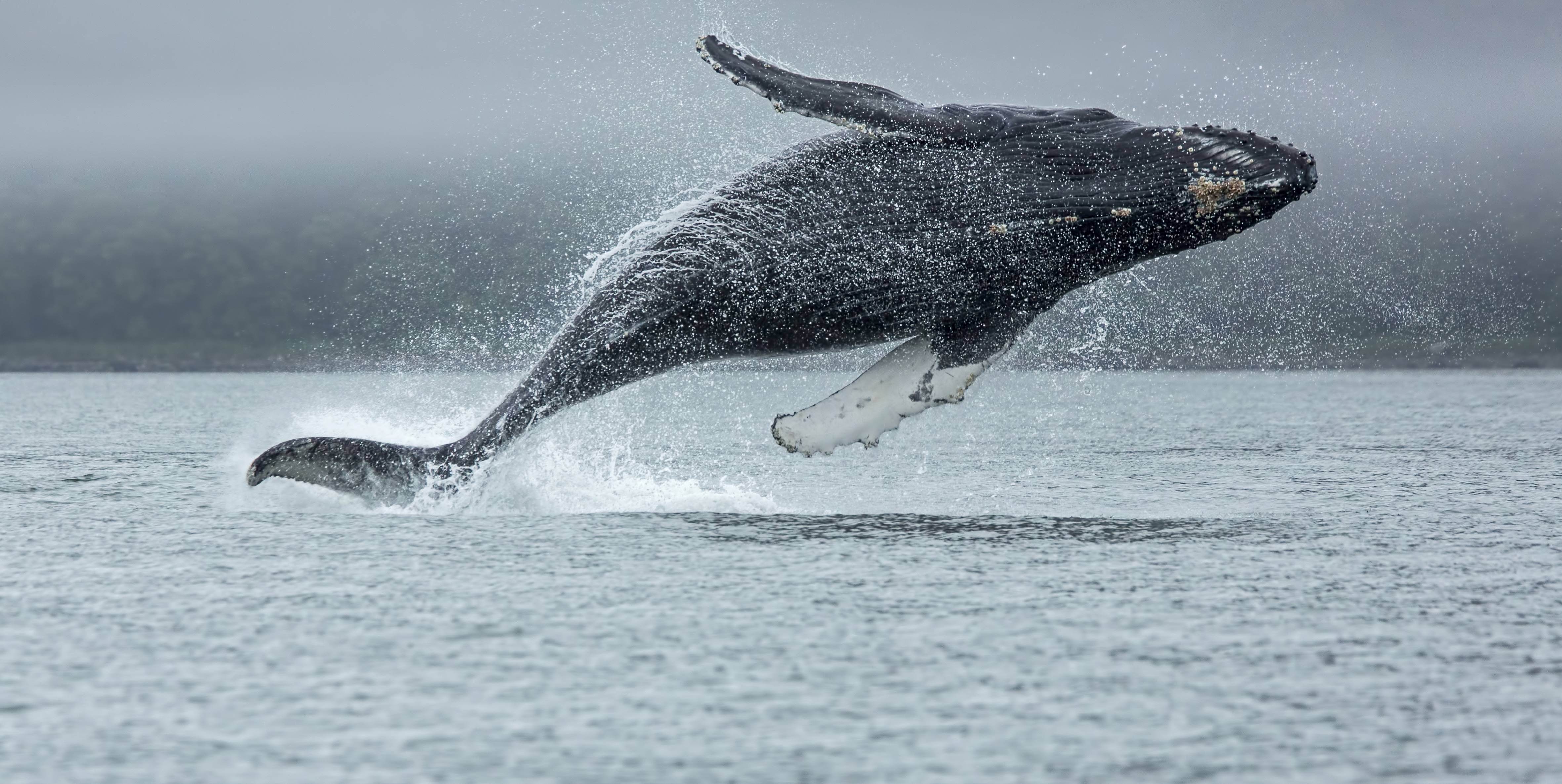The southern right whale (Eubalaena australis) is an iconic species of the Argentine Patagonian coast, declared a National Natural Monument in 1984. It stands out for its large size; it can measure up to 17 meters long and weigh up to 60 tons. Every year, starting in May, they begin to arrive in the calm waters of the northern Patagonian gulfs, in Península Valdés, to give birth to their calves, and they remain there until the last months of the year when they begin their migration to feeding areas in the ocean. Its name in English, “right whale,” has an unfortunate origin; it was given by whalers of yesteryear from Europe and North America to designate it as the “right” species to hunt because it was slower than others, had longer baleen, produced more oil, and floated when it died. Such was the pressure suffered that, from an original pre-hunting population estimated at more than 100,000 individuals, only a few hundred remained at the beginning of the 20th century, restricted to the coasts of South Africa, New Zealand, and Argentina. And although whaling countries agreed to stop hunting them in the early 1900s, illegal killing continued until 1970. In recent decades, this population has shown sustained growth and currently numbers around 5,000 animals. Its conservation status is “Least Concern” according to the criteria of the International Union for Conservation of Nature (IUCN). And since 2013, Península Valdés has been declared an marine protected area of Argentina.
The humpback whale (Megaptera novaeangliae) is recognized for its distinctive pectoral fins and dorsal fin located above a small hump. It is also notable for the beauty and complexity of its song and its great jumping ability, which allows it to perform striking spins and acrobatics. It is a cosmopolitan species, common in coastal and shelf areas of all oceans. In South America, it migrates from its summer feeding grounds in temperate and cold southern waters to its winter breeding grounds in tropical and subtropical seas. In Argentina, it is one of the most commonly observed species on the coasts of the San Jorge Gulf, the Beagle Channel, the Antarctic Peninsula, and the South Orkney Islands. In the Beagle Channel, Tierra del Fuego, its presence has been reported since 1979, and has been increasing since the 1990s.
 Humpback whale. Credit: Shutterstock.
Humpback whale. Credit: Shutterstock.
Challenges
Although the conservation status of these whale species is currently considered “Least Concern,” both face challenges in Argentina: marine pollution from crude oil and plastics, ghost fishing (nets or fishing gear that are lost or abandoned and can cause entanglement); noise pollution (from intense shipping and seismic prospecting); collisions with tourist and fishing boats (which can cause serious injury or death); and changes caused by climate change (such as increases in toxic algae biomass, which can kill them). For this reason, whale monitoring remains essential in order to continue gathering essential data on how they use the sea at different stages and throughout their life cycles, and to develop recommendations to mitigate these risks and impacts.
Our work
Since the 1960s, we have been studying the behavior and promoting the conservation of the southern right whale. We are part of the collaborative research project Tracking Whales (https://siguiendoballenas.org/en/home/) which uses satellite technology to track their presence and use of the northern Patagonian gulfs and their trajectories through the southwestern Atlantic and sub-Antarctic seas. With this information, it is possible to infer overlap with human activities, support the importance of marine protected areas, and develop recommendations to regulate fishing, hydrocarbon, and shipping activities that could impact them. The development of better technologies for studying whales and the oceans allows us to obtain more and better information about the location of each individual, as well as valuable oceanographic data to understand how they use marine environments and predict how they would respond to the impact of climate change. In addition, we work with provincial governments to protect the critical habitats of this species in coastal waters through the creation and management of protected areas.
Since 2013, we have also supported research on humpback whales in the Beagle Channel. We are participating in a citizen science photo-identification project led by the marine mammal group at the CADIC-CONICET (Southern Center for Scientific and Technical Research) Wildlife Ecology and Conservation Laboratory, together with the IMMA Project (Investigations in Southern Marine Mammals) and Compromiso Onashaga. The initiative seeks to integrate photographic and film records obtained by captains, crews, guides, photographers, tourists, and citizens, and analyze them using photo-identification techniques (identifying distinctive features of their dorsal fins), creating a long-term monitoring program for this species that allows us to know the number of whales entering the channel, their variation between seasons, the length of time they remain in the area, and other features of demographic and ecological interest. As a result, a catalog was created that brings together the identified individuals. In addition, comparison with catalogs from other regions provides information about their migratory routes and life histories.